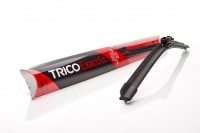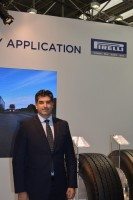Autoelectro’s reversible alternator: how StARS works
 Nick Hood, Autoelectro UK sales manager
Nick Hood, Autoelectro UK sales manager
For more than three decades, Autoelectro has proved its credentials as a remanufacturing pioneer, offering a premium quality range of starter motors and alternators to the UK and European aftermarket. Over that time, the Bradford-based company has amassed a level of knowledge and experience that has allowed its team of experts to produce and supply an award-winning range of rotating electrical components.
Autoelectro has embraced changes in technology, too, which have been integrated into its environmentally-friendly formula of re-engineering units from existing ‘core’ and returning it to its original condition and performance – at times, even exceeding it. One of these shifts in technology has been the introduction of the Stop-start Alternator Reversible System – or StARS.
Basic understanding of the StARS
Stop-start systems help reduce vehicle emissions and make economic differences for the driver, which should result them in making fewer trips to the fuel pump. Fuel savings of up to 3 per cent and 15 per cent are made when driving normally or stuck in traffic respectively.
The StARS solution is a reversible alternator, which replaces the conventional alternator and starter motor – to provide the combined function of the two components. The design allows the conversion of electrical energy into mechanical energy – and vice-versa.
Later applications of conventional alternators would have their charge rate controlled by the vehicle’s ECU; whereas, the StARS has its own ECU which controls the reversible alternator.

- When the ignition key is turned, the vehicle’s ECU will start the engine. This is achieved by the battery providing the required electrical energy; the reversible alternator then acts as a starter motor and starts the engine via an auxiliary belt.
- During normal driving conditions, the reversible alternator behaves as a conventional alternator by converting the mechanical energy into electrical energy and charging the battery.
- Once the vehicle’s speed has fallen below 5mph, and providing the gearbox is in neutral and the clutch pedal is released, the StARS’ own ECU will command the engine to stop.
- Once the clutch is pressed and first gear engaged, the StARS’ ECU sends another order to the engine to start again.
- When the vehicle is switched off by turning the ignition, the vehicle’s ECU will stop the engine.
The StARS has been incorporated on many vehicle applications since its inception, such as:
- Citroën C4 diesel (2010-onwards)
- Peugeot 308 diesel (2011-onwards)
- Mercedes A and B-Class petrol (2005-onwards)
- Smart Fortwo petrol (2008-onwards)
UK sales manager, Nick Hood, commented that Autoelectro has established a range of reversible alternators for vehicles, such as those identified above. He said: “Autoelectro is the market-leader for rotating electrics in the UK having the best range and availability. Being based in the UK and owning our own remanufacturing facilities allows us to supply a full range for the UK market.
“This gives us an edge over our competitors, who rely on overseas supply or copy units and where the low volumes of tail-end product doesn’t make it worth their while stocking those parts.”





Comments